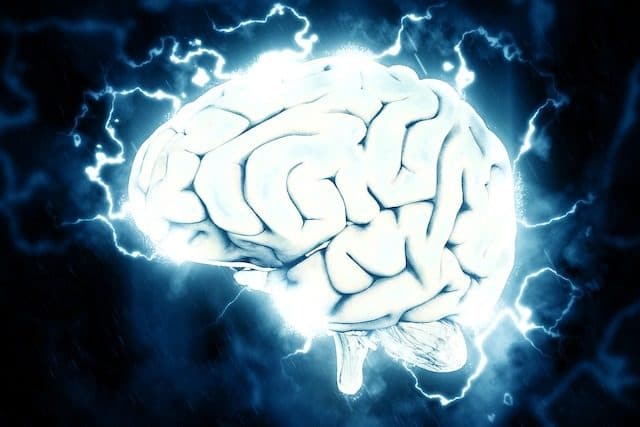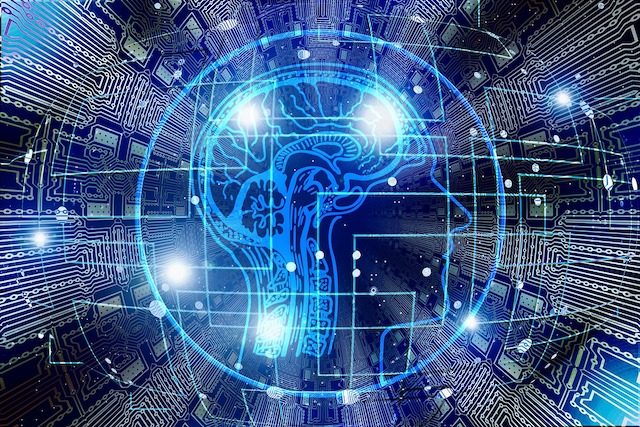At this point, if you have never seen a zombie movie or otherwise experienced a zombie fiction you may actually live in a strange trans-dimensional bubble. Whether you like the genre or not, you should at least be aware of zombie fiction and the basic tenets of it.
From 1914’s Voodoo through 1932’s White Zombie and then 1968’s Night of the Living Dead, zombie fiction had a slow, steady build in cinema that started with the voodoo origins and slowly (as is fitting) evolved into the living dead ghouls that crave human flesh brought to life by George Romero.
Since the first Living Dead movie, zombies have exploded (sometimes literally) on screen and evolved to be the result of plagues, fungus, aliens or nothing at all. It’s become a multi-billion dollar industry. And that’s all well and good for the realm of fiction, but what about reality?
We’re so enamored with the idea of bringing the dead back to life, is there any room for science to intrude into fiction and make this reality? On one hand, it sounds absurd. Of course the dead can’t come back to life. But consider that Lauren Canaday was clinically dead for 24 minutes before reviving. Some people have gone 27 minutes with no heartbeat at all.
These cases are not to be confused with the Lazarus Effect which makes it seem like someone died and then revived, sometimes hours later. This is true, clinical death. And people have come back. So does it matter if it was less than half an hour? And what if we could stretch that time out? Could you ever come back from the dead, ideally not as a zombie but just as yourself, with minimal side effects? Let’s see what science says.
How Long Can a Person Be Dead and Still be Revived Now?

Carol Brothers suffered a cardiac arrest and sometime between 30 and 45 minutes later her heart started beating on its own again. Others have come back from a cardiac arrest seemingly hours later. Velma Thomas was revived a full 17 hours after she was thought to have died. These are all examples of the Lazarus Effect that we mentioned just a little earlier.
Normally, the Lazarus Effect occurs within about 10 minutes of someone being declared dead. That means they went into cardiac arrest, someone started CPR, they were determined to have died and CPR was stopped. Start your timer, 10 minutes later, this person will just spontaneously revive on their own.
The important thing to remember about the Lazarus Effect, or autoresuscitation as it is more properly known, is that it’s not technically the dead coming back to life. Just because you have been declared clinically dead doesn’t mean you are dead. It just means that, in this case, the signs of life are no longer detectable. Vital signs indicate that their heart and brain are no longer functioning, but in reality, there’s just a delay in the return of blood flow in the body. Science can’t fully explain why that happens, but the rare people who do experience it are never truly dead in the first place.
That said, it’s still something to be aware of because there are likely cases when someone is not dead, has been pronounced dead, and could have been saved.
In normal situations, only so many minutes are available to save a life. The brain needs oxygen and blood. If you aren’t breathing for five to ten minutes, there’s a good chance your brain will suffer irreversible damage if you can be revived at all. After 15 minutes it’s considered all but impossible to live.
How to Bring Back the Dead

Now, it’s worth noting that there’s dead and then there’s dead. We have ways to ameliorate death. CPR, for instance. That can be the difference between life and death. That can extend life past the point when someone should have died, and it’s a fairly simple thing that we all know. There are other things like CPR that can have similar life preserving or extending effects.
Inducing hypothermia is a treatment that is sometimes used for patients who suffer a cardiac arrest to help preserve brain function and increase the chances of their survival. Normally you want to avoid hypothermia but after a cardiac arrest when blood flow is not normal, you run the risk of brain or organ damage. The lower temperatures of induced hypothermia can help protect the tissue until blood flow can be restored and minimize the risk and long-term damage that could otherwise result.
There are operational treatment centers right now, resuscitation facilities, that specialize in the precise lowering of body temperature to the place where your chances of survival can drastically increase.
Experimental Plans

There are more experimental measures being pursued as well that may help not just prevent some damage but turn death around entirely.
Cryogenics has been something most people are vaguely familiar with for years. Mostly it’s been presented comically, people still make jokes about Walt Disney’s frozen head. But it’s not all jokes. Baseball player Ted Williams died in 2002 and his head was surgically removed and cryogenically frozen. The thought process is that, in the future, Williams may be able to be revived with technology and methods we don’t have yet.
Tomorrow BioStasis offers cryopreservation for its clients, most of whom are in the tech sector and have the money to spend on trying to preserve their brains after death. The idea, as with what Williams did over twenty years ago, is to hopefully preserve a body until such time as the cause of death can be reversed.
In some cases, the body is not actually involved. Many of these people want to preserve their brains only. In this case, the belief is that, in the future, a new body could be made available or they can just exist virtually.
In 2016, a company called BioQuark proposed experimenting with injecting stem cells into the spinal cords of clinically brain dead patients. This was going to be combined with electrical nerve stimulation, laser therapy and protein injections. The idea was soundly thrashed in scientific circles, but it did show that there were people with potential money and means interested in trying the most outlandish ideas to cheat death itself.
In 2019, researchers at Yale really pushed the envelope when they were able to restore some function to brain cells of a pig that had been dead for four hours. Circulation and cellular activity were recorded and by no means did this bring the pig back to life, but it did challenge long held beliefs about brain death and what was possible. Remember, we said earlier that the general rule of thumb is 15 minutes.
The brain of a pig was flooded with a chemical solution. Brain activity that was normally thought to and within minutes was observed. That said, it wasn’t as though the brain was having thoughts. The restored function was extremely Limited and in no way was their awareness or feeling or anything like that.
In 2022 another pig experiment was conducted using a machine that had been designed to circulate blood and other fluids through the body. This time, organs that had been dead for hours showed signs of tissue repair. Like the previous experiment, the pigs were not revived in a way that suggested they had come back from the dead. Nothing close to consciousness was attained. But it’s a stepping stone, and perhaps something that can one day lead to some serious ethical considerations about the difference between life and death.
Virtual Immortality

There’s another way to bring the dead back to life that involves another kind of science beyond biology. This one requires some computer science. The potential to preserve your entire mind, the essence of who you are devoid of the actual flesh, inside a machine.
Science fiction has played with this idea for years: a human brain could be downloaded into a computer. Conceptually it’s not hard to imagine, most of us with even a basic understanding of computers at least get the theory of how it works. The practical application would, of course, be much more complex.
So how far-fetched is the idea? Is it total fiction or just something we can’t do yet? Ray Kurzweil thinks it could be a reality as early as 2045. It’s believed a human brain has about 2.5 million gigabytes of memory to put it in computer terms, and that’s certainly vast. That works out to 2.5 petabytes which is enormous but not fictional at all. You can string a few large hard drives together now to get that much and soon enough whole petabyte drives will be available, so the memory is not the issue.
The human mind is more than raw data, of course. The you of you is made up of how your whole mind works and uses those memories. You have 125 trillion synapses working in your cerebral cortex alone that make you who you are. Your whole brain may contain quadrillions of them.
Your personality isn’t just the result of your brain alone. Chemicals and hormones affect how your brain functions, your mood, your personality, your memory, and everything else. If you are just a brain without access to the body that produces all of those hormones and chemicals can you ever truly be yourself in a virtual space?
The link between mind and body is why neuroscientist Moheb Costandi believes you will never be able to get your mind into a computer, not really. But others aren’t so sure. Elon Musk, for instance, thinks that one day you’ll be able to use something like Neuralink to download your whole personality.
Researchers have theorized it could be done even with our limited understanding of how the brain operates thanks to the principles of emulation. If the brain functions the way it does and the non-physical parts like your personality, your consciousness, and memory, are born from the physical structure, then if we perfectly replicate the physical part, the non-physical should fall into place. In other words, if we can recreate your brain exactly, be it from cloned tissue, some kind of organic substitute, or in a virtual network, your whole mind should fit right in like your hand into a glove. Theoretically.
The current problem with brain emulation is that we can barely copy a mouse brain, never mind a human. The neurons and synapses and all of those connections are incredibly complex.
There are also potential ethical concerns with the idea of being able to preserve a mind virtually. For instance, imagine right now if you woke up and were a computer. Your mind is yours, you think as you do now, but it’s 200 years in the future and someone downloaded you. They own you now. You have no body, you can never go anywhere or do anything unless it’s virtual and, presumably, at the whim of whoever controls the hardware that houses you. That’s terrifying.
There’s also the question of whether digital immortality is immortality at all. If you are just your mind, housed in a machine, are you still human? Given how we view human rights today around the world, and how certain groups are not considered equal for any number of reasons in any number of places, it’s not difficult to imagine that a ghost in a machine would hardly be considered alive by many.
It’s all theoretical now and we can point out countless flaws in how it works, but in a century, or five centuries, this may be as simple as downloading any program. And if that does come to pass, then any of the other methods we mention of bringing back the dead would pale in comparison because virtual immortality would be just that – immortality. Your mind could exist forever, for as long as you wanted. Now that’s something.